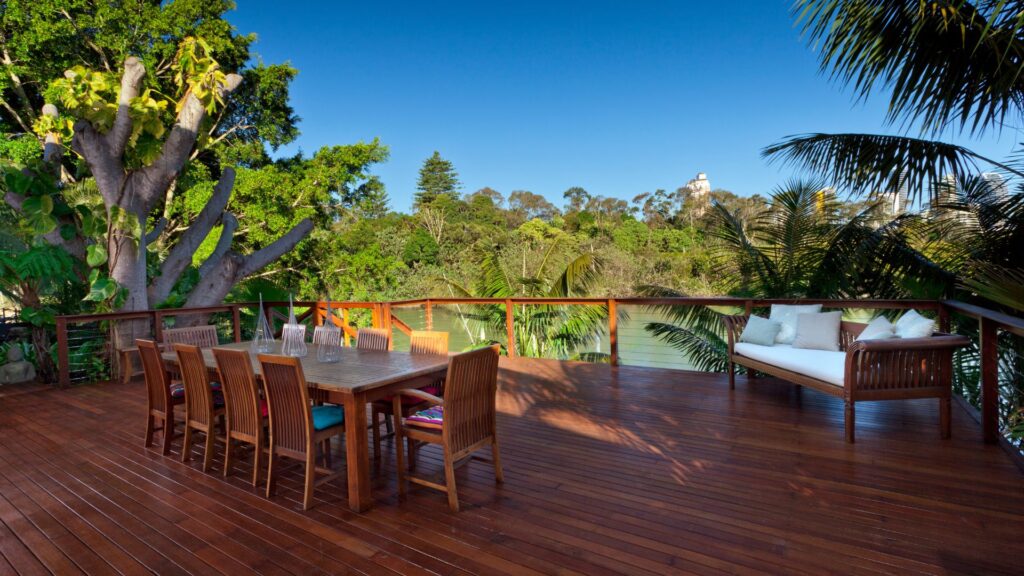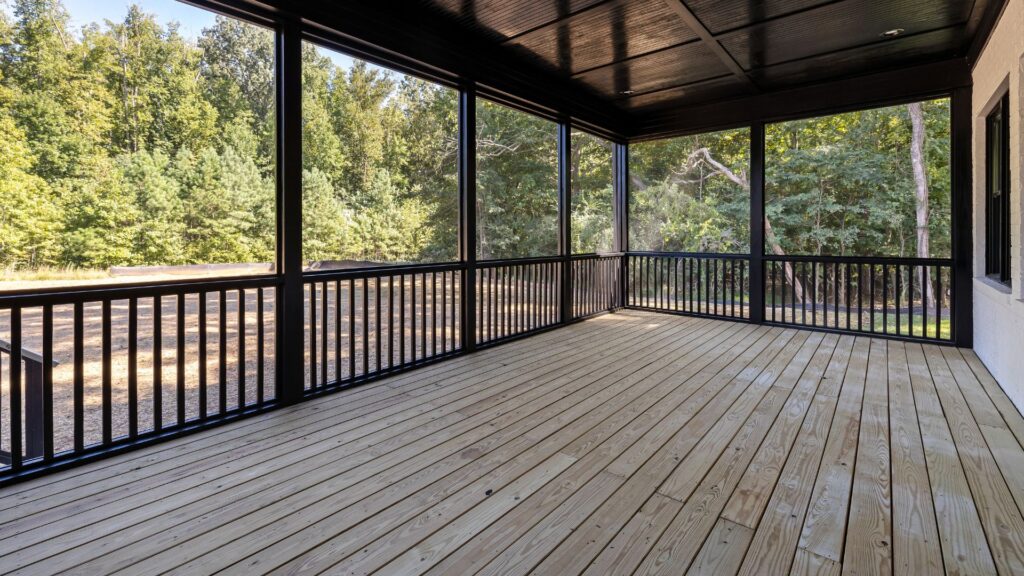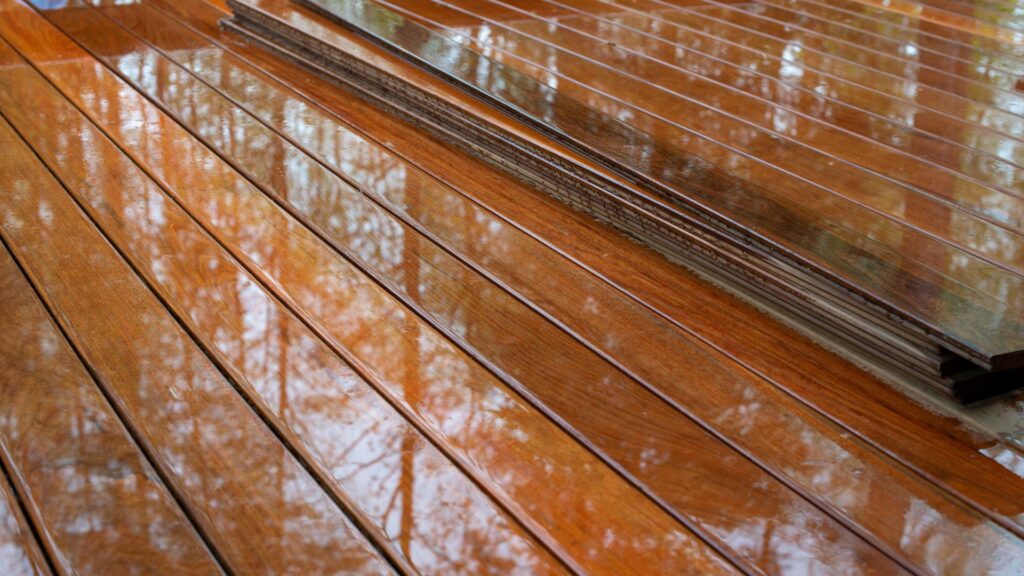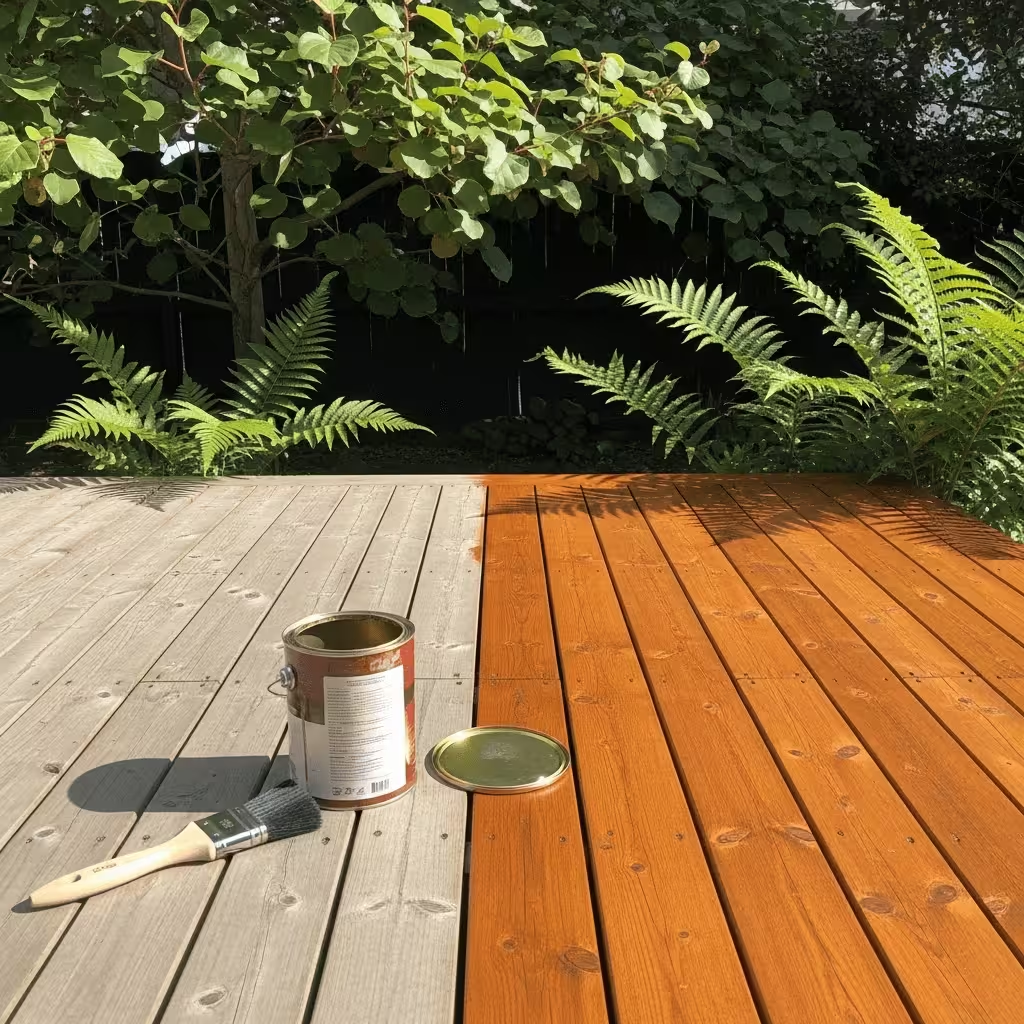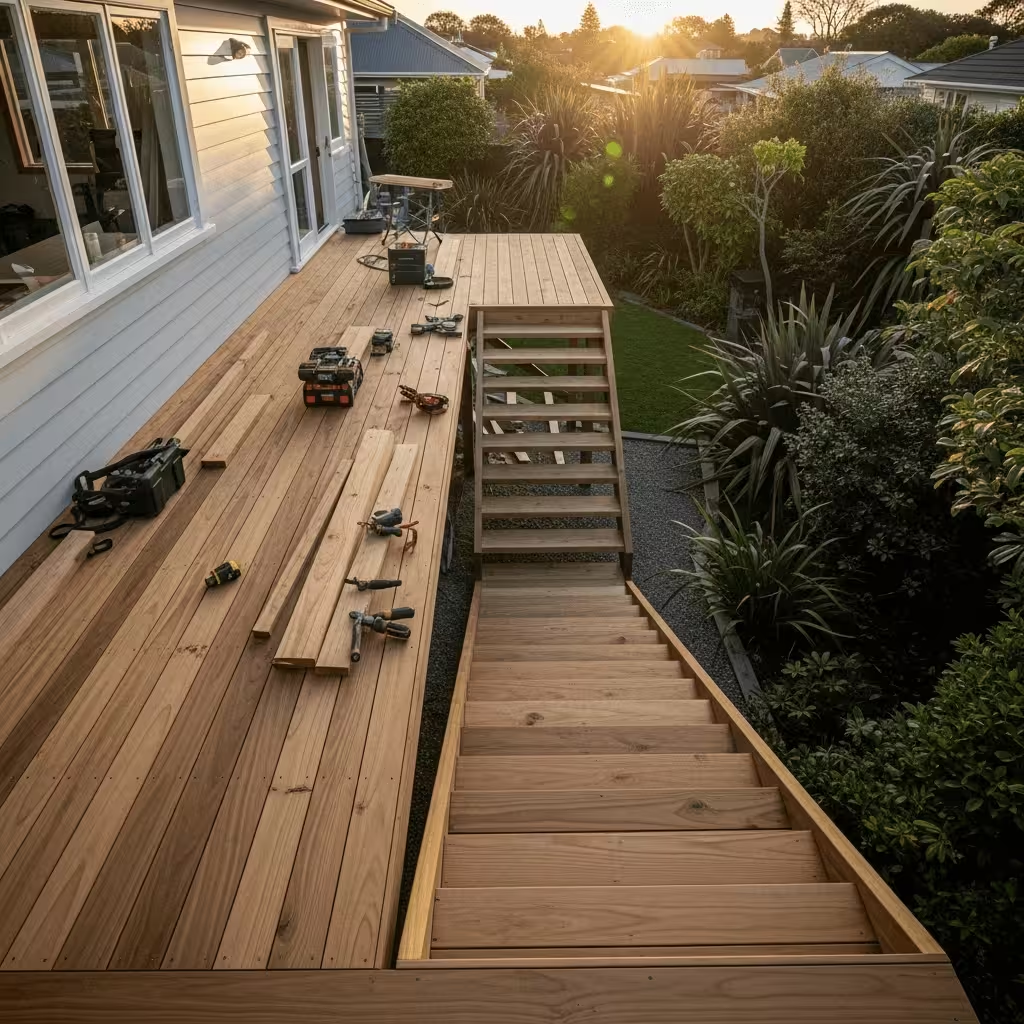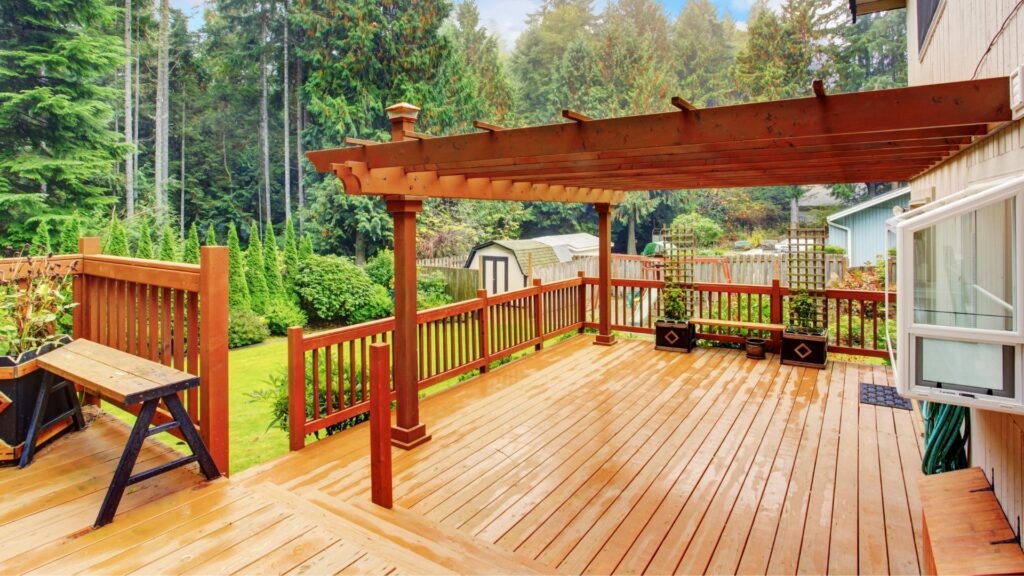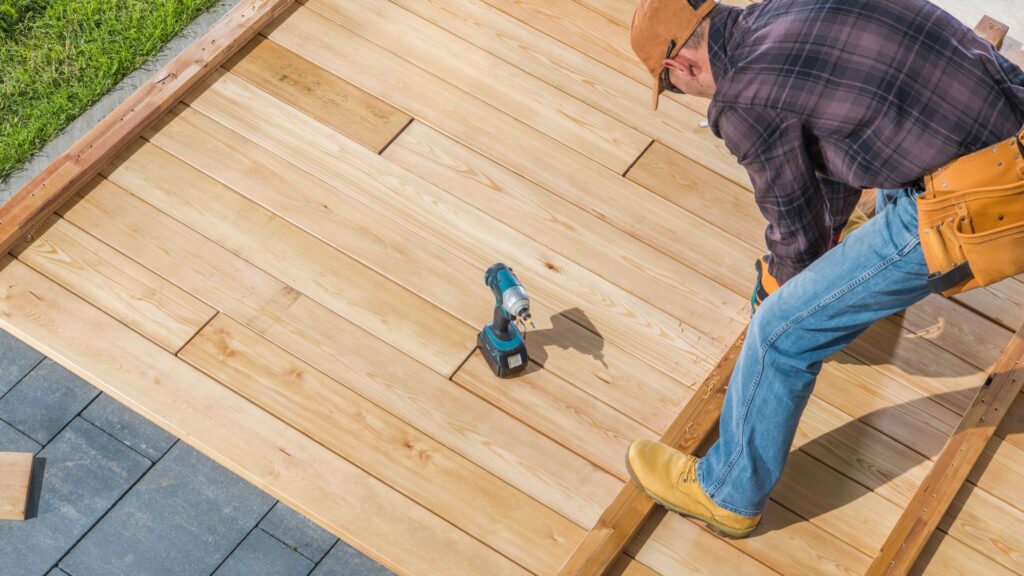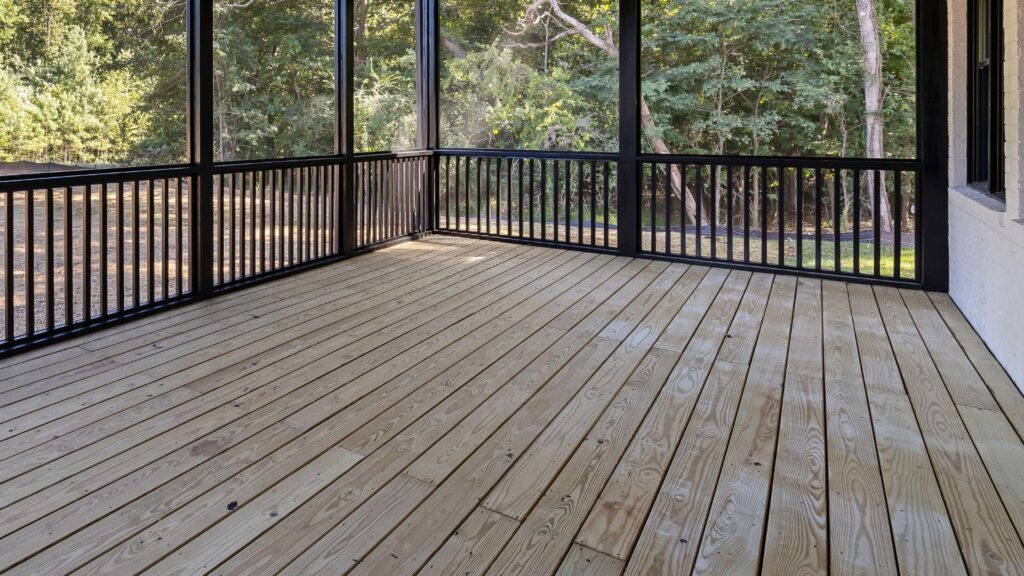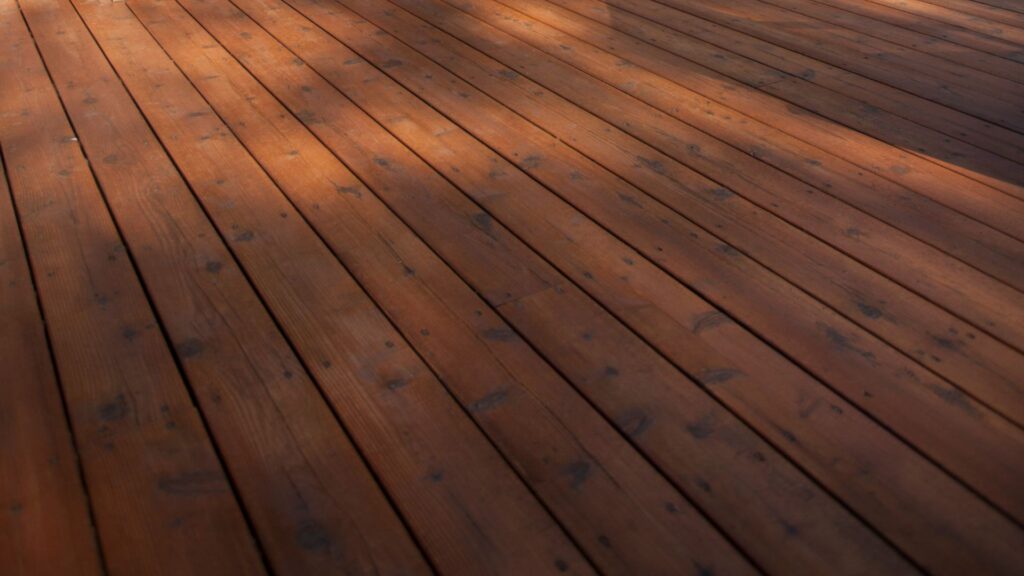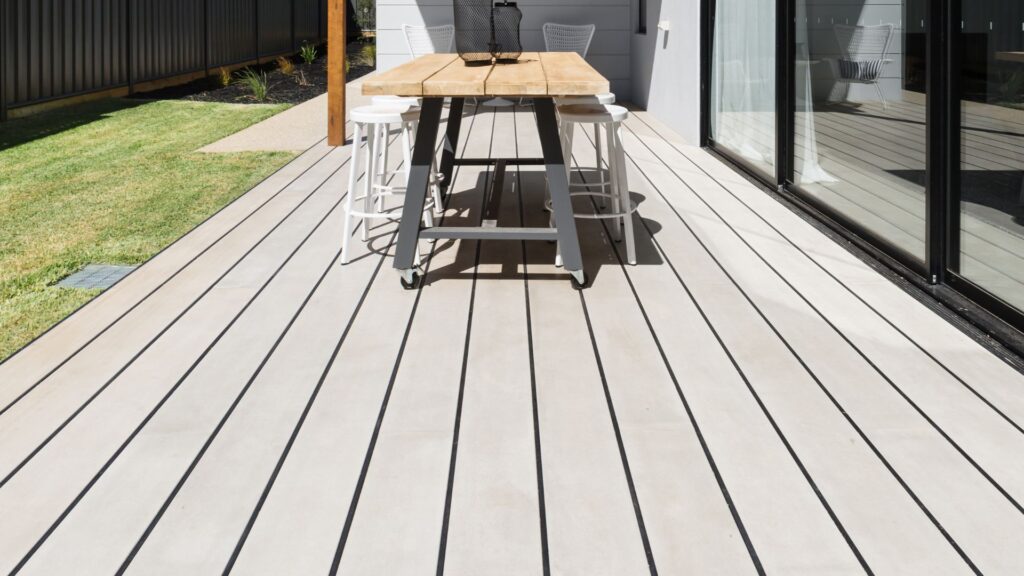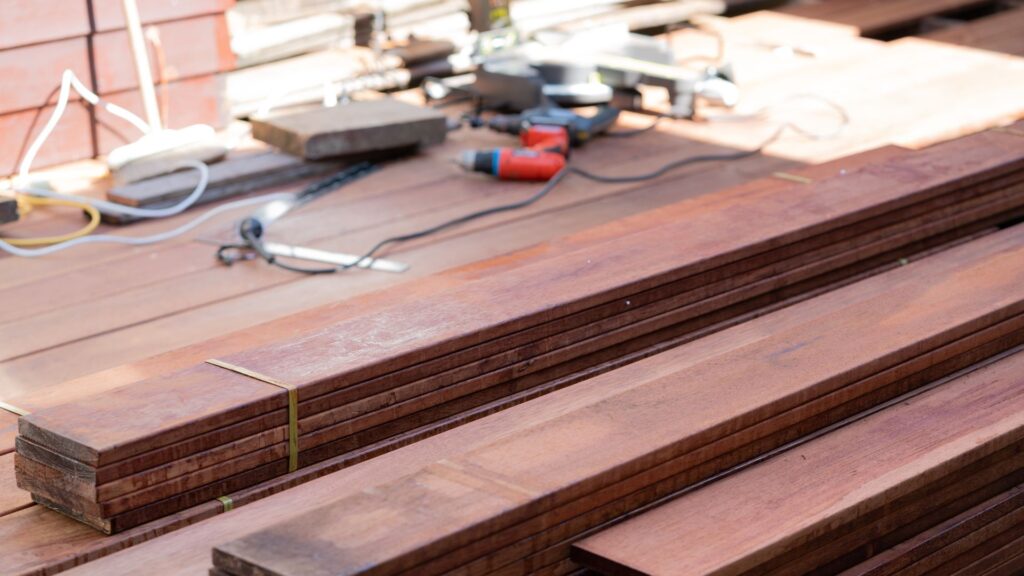Welcome to your guide on the cost of Kwila decking in New Zealand, where we break down everything you need to know before starting your project. Kwila is one of the most popular hardwoods for Kiwi decks thanks to its rich color, strength, and long-lasting performance, but many homeowners wonder how much it really costs and whether it’s worth the investment. In this article, you’ll discover the average price of Kwila decking, the key factors that affect the total cost, how it compares to other decking options like pine or composite, and practical tips to help you save money while still getting a deck that looks great and stands the test of time. By the end, you’ll have a clear idea of what to budget and whether Kwila is the right choice for your home.
The cost of Kwila decking in NZ typically ranges from $90 to $150 per m² for materials, with professional installation adding $300 to $500 per m² depending on design and location. Prices vary based on deck size, timber quality, and extra features like railings or stairs. While Kwila costs more upfront than pine, it’s valued for its durability, rich appearance, and long lifespan, making it a popular choice for New Zealand homes.
Table of Contents
What Is Kwila Decking?
Kwila (often called Merbau) is a dense tropical hardwood known for its strength and long service life. It feels solid underfoot and holds up well in New Zealand’s mix of sun, rain, and coastal air. Fresh boards show rich reddish-brown tones that deepen with oiling. Leave it to weather and it will fade to a soft silver grey. The grain is attractive and often interlocked, which gives your deck a natural, premium look. It resists wear, takes fixings well, and can be sanded back years later for a fresh finish. You should expect some early tannin bleed (the red-brown color washing off in rain). A quick hose-down during the first weeks and smart drainage planning keep that in check.
Why Do Kiwis Choose It Over Alternatives Like Pine Or Composite Decking?
- You get long-term durability. Many Kiwi decks made from Kwila keep their strength for decades with basic care.
- It looks and feels natural. If you want real timber character, Kwila delivers color, grain, and warmth that stained pine struggles to match.
- It stays stable. Dense boards reduce dents and day-to-day scuffing in busy outdoor spaces.
- It’s repairable. You can sand, re-oil, and replace individual boards to refresh the deck without a full rebuild.
- It handles NZ conditions. From high UV in summer to wet winters, Kwila performs when installed and maintained well.
How It Compares At A Glance
- Versus Pine: Pine costs less upfront and is easier to source in treated grades. Kwila costs more but brings greater hardness, richer color, and longer wear.
- Versus Composite: Composite cuts maintenance and gives uniform color, yet it can feel hotter underfoot in full sun and lacks the natural timber look. Kwila needs oiling, but many homeowners prefer its feel and the option to refinish.
Sustainability Concerns (Legal Sourcing, FSC Certification)
Kwila grows in Southeast Asia and the Pacific, so sourcing matters. Ask your supplier for clear, verifiable chain-of-custody documents. Look for FSC-certified stock or an equivalent third-party certification that confirms legal harvest and responsible forest management. Request details on origin, harvest permits, and mill documentation. Choose suppliers who publish their policies, audit results, and compliance statements. You can also:
- Compare certified Kwila with alternative hardwoods or NZ-grown options if certification is not available.
- Plan efficient board layouts to reduce waste.
- Maintain your deck with gentle cleaners and regular oiling so it lasts longer, which lowers the lifetime environmental load.
Practical Tips You Can Use Now
- Rinse new boards to manage early tannin bleed, and protect nearby paving during the first rains.
- Space boards and plan drainage to keep water moving.
- Oil the surface after install, then set a calendar reminder for re-oiling based on exposure.
- Keep receipts and certification docs with your house records. Future buyers may ask for proof of legal, sustainable sourcing.
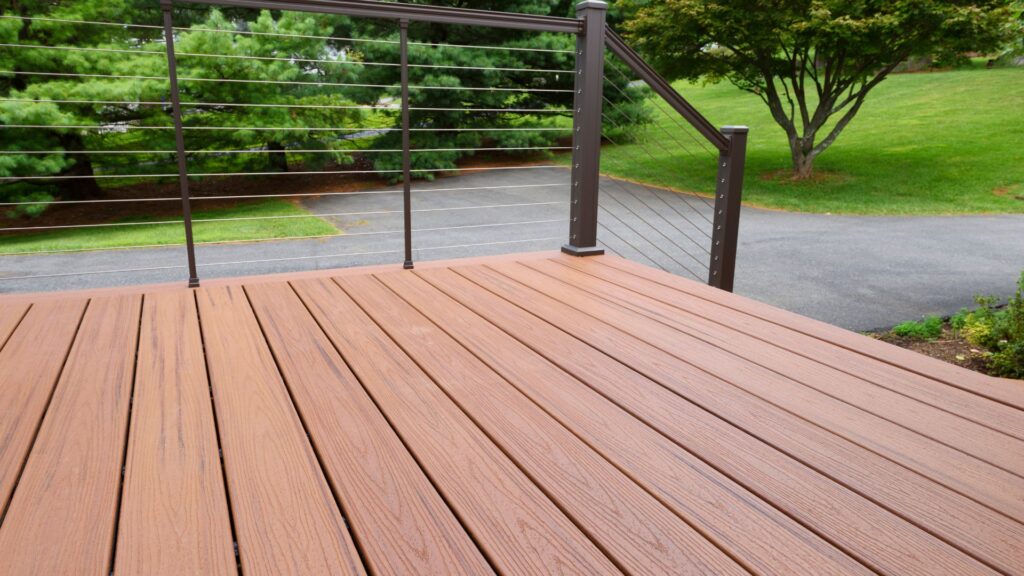
Average Cost Of Kwila Decking In NZ
When planning a new deck, one of the first questions most homeowners ask is, “How much will it cost?” The average cost of Kwila decking in New Zealand depends on several factors, but it helps to start with a ballpark figure.
For the timber itself, Kwila usually ranges from $90 to $150 per square metre. This price covers the boards only and doesn’t include any extras like fixings, joists, or protective oil. Keep in mind that prices can shift depending on the quality of the timber, supplier location, and whether the boards are sustainably certified.
If you choose to have your Kwila deck professionally installed, you’ll need to budget for labour on top of the material costs. In New Zealand, installation charges typically range between $300 and $500 per square metre. These costs account for skilled carpenters, site preparation, and the time it takes to build a safe, sturdy structure. Complex designs with stairs, railings, or multiple levels often push costs toward the higher end of the range.
For those who are comfortable with DIY projects, there is the option of building the deck yourself. By doing this, you save significantly on labour costs and only need to cover materials, tools, and permits. But while DIY can bring the price closer to the lower end of the spectrum, it also comes with challenges, mistakes during construction could end up costing more to fix later. Professional builds, although more expensive upfront, give peace of mind in terms of quality, safety, and durability.
On average, Kwila decking in NZ can cost between $90 and $150 per m² for materials, and $300 to $500 per m² when installed by a professional. These numbers give you a solid starting point for planning your budget, but the final figure will depend on the size of your deck, your design preferences, and whether you take the DIY route or hire a builder.
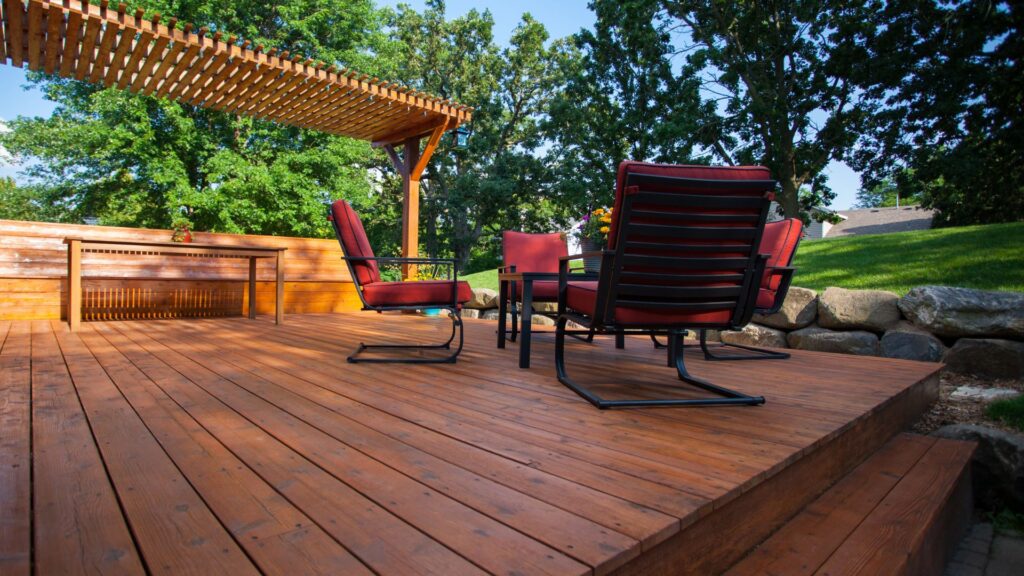
Factors That Influence Kwila Decking Costs
When planning a Kwila deck, the final price often comes down to more than just the timber itself. Several important factors affect the overall cost, from the quality of the wood to the complexity of the design and even the region where you live in New Zealand. Understanding these cost drivers will help you budget accurately and avoid unexpected surprises.
Timber Grade And Quality
Not all Kwila timber is created equal. Premium Kwila decking is typically sourced from well-managed forests and has fewer imperfections, making it stronger and longer-lasting. It also comes with certifications such as FSC, which reassure buyers that the wood has been harvested responsibly. These high-quality boards often come at a higher price per square metre, but they deliver better durability and a more consistent finish.
On the other hand, cheaper imports may seem appealing upfront but can include more knots, uneven colouring, or even warping. While they reduce initial costs, they might require replacement sooner or demand more maintenance over time. Choosing the right grade depends on your budget and how long you want your deck to last.
Deck Size And Design Complexity
The size of your deck is one of the most obvious factors in calculating Kwila decking costs in NZ. A small, single-level deck will naturally cost less than a large, multi-level design. Simple layouts with straight lines keep labour and material costs down, while decks with curves, built-in seating, or multiple levels increase both time and expense.
Think about how you plan to use your deck. If it’s for casual family gatherings, a straightforward design may be enough. But if you want a statement feature with several entertaining zones, be prepared for higher costs.
Labour Costs
Labour costs for installing Kwila decking vary widely across New Zealand. In larger cities like Auckland or Wellington, builders often charge higher rates due to increased demand and living costs. In smaller towns or rural areas, you might find lower hourly rates, but availability of skilled builders could be more limited.
On average, you can expect labour to account for a significant portion of your total decking budget. Professional installation not only ensures safety and compliance with building codes but also delivers a polished finish that adds value to your home.
Extra Features
Adding extras to your Kwila deck can quickly increase the price. Popular features include railings for safety, stairs for multi-level access, deck lighting for ambiance, and hidden fixings for a sleek, modern look. While these upgrades enhance both style and functionality, they require additional materials and skilled labour.
For example, hidden fixings create a cleaner finish by concealing screws, but they cost more than standard fastenings. Similarly, integrated lighting adds convenience but requires electrical work. Consider which features are essential and which are “nice to have” so you can balance cost with design.
Preparation Work
Site preparation is often overlooked but plays a major role in the final cost of a Kwila deck. If your backyard is already flat and accessible, preparation may be minimal. But if the area needs levelling, retaining walls, or significant foundation work, expect higher expenses.
Other hidden costs include building permits, which are required for larger or elevated decks in New Zealand. Council fees, inspections, and compliance requirements can add both time and money to your project. Planning ahead for these elements helps you avoid budget blowouts.
By considering timber grade, deck size, labour rates, extra features, and preparation work, you’ll get a clearer picture of the true cost of Kwila decking in NZ. Each factor adds up to create your final budget, so weigh your priorities carefully. Investing in high-quality timber and professional installation may cost more upfront but often delivers greater value and a longer lifespan for your outdoor living space.
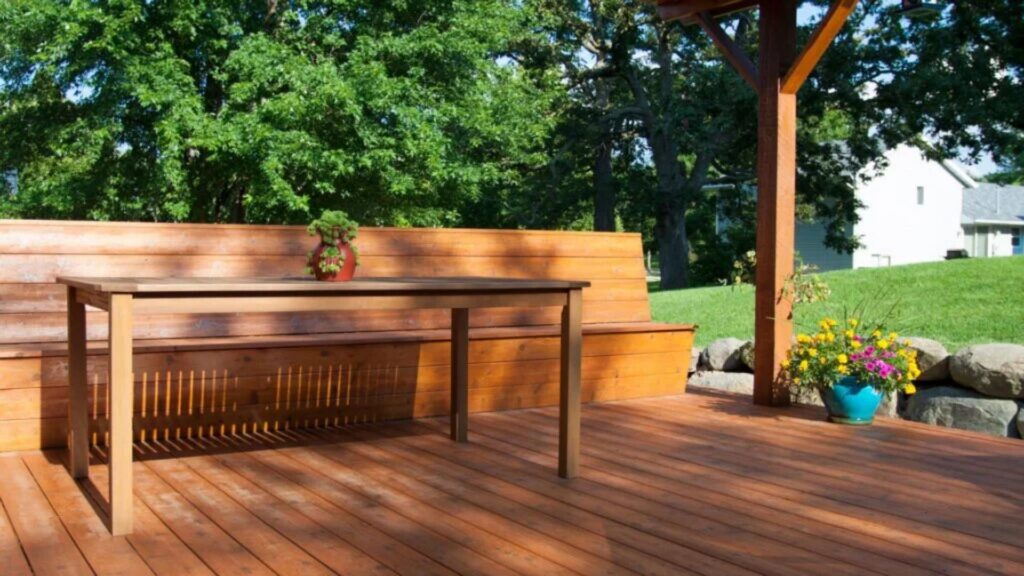
Comparing Kwila With Other Decking Materials
When planning a new deck in New Zealand, homeowners often compare Kwila with other popular options like pine, composite, or alternative hardwoods. Each choice comes with its own set of costs, benefits, and long-term considerations. Below, we’ll break down how Kwila stacks up against the most common decking materials.
Kwila Vs Pine: Cost, Durability, Appearance
- Cost: Pine is the most affordable decking timber in New Zealand. On average, pine decking materials cost around $40–$70 per m², while Kwila generally ranges between $90–$150 per m². The upfront difference can be significant, but pine often requires more maintenance and may need replacement sooner.
- Durability: Kwila is a dense hardwood known for its strength and resistance to heavy foot traffic. It is naturally more resistant to pests and weather damage compared to pine. Pine, being a softwood, is pressure-treated to improve its durability but still won’t last as long as Kwila without regular treatment.
- Appearance: Kwila has a rich reddish-brown colour that weathers into a silver-grey patina over time if left untreated. Pine, on the other hand, has a lighter, yellowish tone that requires staining or painting to achieve a premium look. Many homeowners prefer Kwila’s natural beauty, which adds warmth and character to outdoor spaces.
Kwila Vs Composite: Longevity, Maintenance, Upfront Price
- Longevity: Composite decking is made from a blend of wood fibres and recycled plastics. It’s designed to last 25–30 years or more with minimal upkeep. Kwila, when maintained properly, also has a lifespan of 25+ years, making both strong contenders for long-term value.
- Maintenance: Composite requires little more than the occasional clean with soapy water, whereas Kwila needs oiling every 6–12 months to maintain its colour and prevent surface cracking. For busy homeowners, composite can be the lower-maintenance option, though some still prefer the authentic timber feel of Kwila.
- Upfront Price: Composite decking often carries a higher upfront price tag than Kwila, sometimes exceeding $200 per m² depending on the brand. While Kwila is still considered premium, it typically falls into the mid-to-high range compared to composite, making it a more budget-friendly hardwood choice.
Kwila Vs Other Hardwoods (Vitex, Garapa, Spotted Gum)
- Vitex: Often sourced from the Pacific, Vitex is slightly cheaper than Kwila and has a pale, creamy appearance. It weathers well but is softer, meaning it may not last as long in high-traffic areas.
- Garapa: This hardwood is light golden-brown and known for being highly durable. Its price is often similar to Kwila, but the colour tone appeals to homeowners who want a brighter deck.
- Spotted Gum: Popular in Australia, Spotted Gum is harder and denser than Kwila, offering excellent fire resistance. It is usually more expensive, but it provides outstanding longevity and a unique grain pattern.
Compared with these hardwoods, Kwila sits in the middle in terms of cost and performance. It offers a balance of beauty, durability, and availability, which is why it remains a favourite across New Zealand.
Balanced Advice: Is Kwila Worth It?
Kwila decking falls into the mid-to-high price range compared with other materials, but its combination of durability, natural beauty, and widespread availability makes it a smart investment for many homeowners. While pine is cheaper and composite is lower-maintenance, Kwila strikes a balance that offers both long-lasting value and a premium aesthetic. For anyone looking to build a deck that will stand the test of time while adding visual warmth to their home, Kwila is well worth considering.
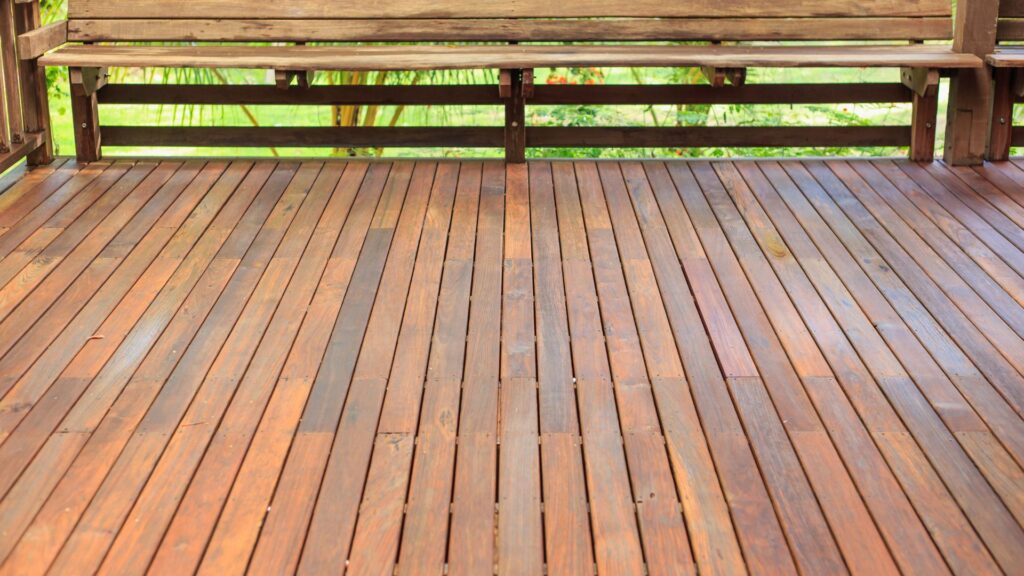
Hidden Or Ongoing Costs To Consider
A Kwila deck looks premium, but the spend does not end on day one. Plan for care, cleaning, replacement stock, and ethical sourcing. Use the notes below to set a realistic yearly budget and keep your deck looking sharp.
Oiling And Maintenance: To Maintain Colour And Prevent Weathering
Kwila weathers silver without oil. If you want the rich reddish-brown tone, regular oiling is part of ownership.
- Use a penetrating exterior decking oil with UV protection.
- New decks often need two coats after install, then one coat every 9–12 months in most NZ climates. Coastal or high-UV spots may need a touch-up sooner.
- Prep matters. Wash, let dry fully, and apply oil on a rain-free window. Work the oil into end grains and cut edges.
- Coverage varies by product and board profile. A practical planning number is 8–12 m² per litre per coat.
- Example Budget For A 30 m² Deck
- Two initial coats: about 5–8 L total, depending on coverage.
- Yearly top-up: about 3–4 L.
- Add rollers, brushes, oiling pads, drop sheets, and rags.
- Time Cost: Expect half a day to a full day for cleaning and oiling a typical deck, including drying gaps between coats.
Tips
- Wipe spills fast to avoid patchy dark spots.
- Keep a small bottle of oil for quick end-grain touch-ups after drilling or trimming.
- If you prefer a silvered look, you can skip oiling and budget only for cleaning. You still need to clean to protect the timber.
Cleaning Products: Algae/Mould Prevention
NZ decks see rain, shade, and pollen. That mix breeds algae and mould, which turns boards slippery and dull.
Routine
- Sweep weekly in leaf-heavy seasons.
- Wash quarterly with a deck cleaner to lift grime and tannins.
Products
- Oxygen-based cleaners for general washes.
- A deck brightener to reset colour before oiling.
- An anti-mould wash for shaded or damp areas.
Tools
- Stiff deck brush, bucket, and hose.
- A water blaster on low pressure if needed. Keep the nozzle moving to avoid raising the grain.
Budget
- Set aside a small annual line item for cleaners, brushes, and replacement pads.
- If hiring gear, add a one-day rental for a water blaster when doing a seasonal deep clean.
Tips
- Rinse garden beds before and after cleaning to protect plants.
- Clear gaps between boards so water drains and algae has fewer places to grow.
- Always rinse chemicals thoroughly before oiling.
Replacement Boards: Future-Proofing For Long-Term Wear
Even a tough hardwood can suffer from impact damage, fastener issues, or localised rot after many years. Planning now saves headaches later.
Buy Extras Up Front
- Keep 5–10% spare boards from the same batch for colour match. Store flat, dry, and off the ground.
Fixings
- Stock extra screws or hidden fasteners from the same brand. Mixing hardware can create fit and corrosion issues.
When To Replace
- Swap boards that split, cup, or stay soft after drying.
- Treat minor surface checks with oil. Replace only when structure is compromised.
Budget
- Expect costs similar to your original per-m² timber price for materials, plus labour if you bring in a pro.
- Add a call-out fee and time for sanding and blending the finish with adjacent boards.
Colour Blending
- The new Kwila starts to get redder. Wash and oil the new board, then oil a wider area to soften the contrast.
Tips
- Photograph the subframe and joist layout before the first boards go down. It makes targeted replacements easier years later.
- Log your oil brand and colour tone. Consistency helps replacements blend in.
Environmental Costs: Choosing Sustainably Sourced Kwila
Kwila is a tropical hardwood. Responsible sourcing protects forests and communities and may change your upfront price.
Certifications To Ask For
- Look for recognised chain-of-custody documentation such as FSC.
- Request paperwork from your supplier, not just a verbal claim.
Supplier Transparency
- Ask where the timber was harvested and milled.
- Prefer suppliers who publish sourcing policies and audit results.
Price And Value
- Certified timber can cost more, but it supports legal and responsible forestry and reduces reputational risk for your project.
Offcuts And Waste
- Plan cuts to reduce waste. Reuse offcuts on steps, planters, or edging.
Finishes And Runoff
- Choose low-VOC oils and cleaners where possible.
- Avoid over-application so excess product does not wash into soil and drains.
Tips
- Add sustainability notes to your project file. Future buyers value proof of responsible sourcing.
- If certification is not available, consider verified alternative hardwoods or composites with clear supply chains.
Quick Budget Checklist
- Deck Oil: Initial two coats, then a yearly top-up.
- Cleaners And Brightener: Quarterly light clean, seasonal deep clean.
- Tools: Brushes, pads, rollers, trays, and a low-pressure washer if needed.
- Spare Boards And Fasteners: 5–10% extra, stored well.
- Labour Or Time: Set aside a day for deep clean and oiling.
- Sustainability Premium: Certified timber and low-VOC products.
Plan for these items from day one. Your Kwila deck will hold its colour, stay safe underfoot, and deliver long service life without surprise costs.
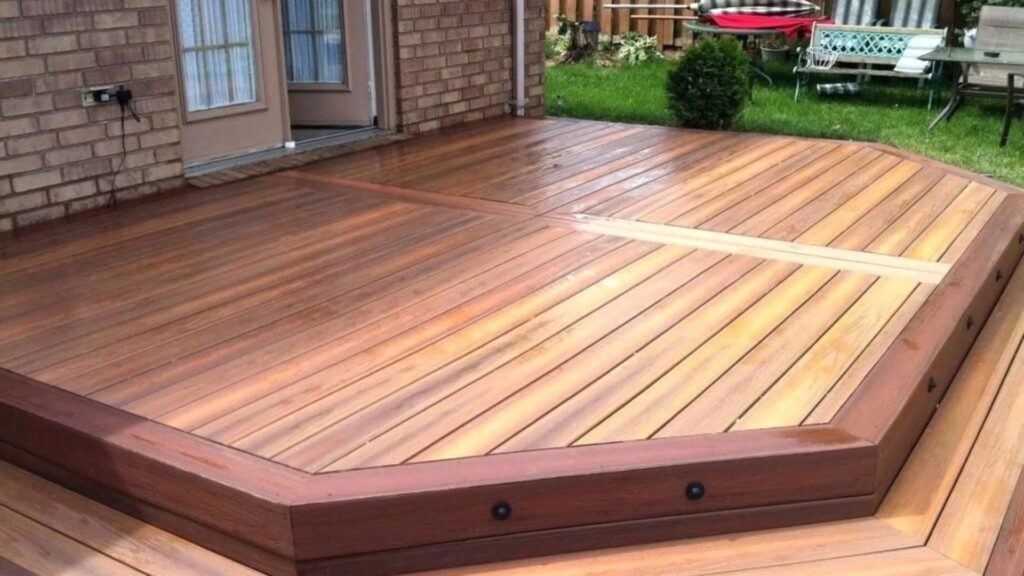
Tips To Save Money On A Kwila Deck
You want the rich look of Kwila without blowing the budget. Start with a clear plan, compare real quotes, and keep the build simple. Small choices stack up to big savings.
DIY Vs Pro Installation: Pros And Cons
- Do it yourself and you cut labour. That can be the largest slice of total Kwila decking cost.
- You’ll need solid carpentry skills, time, and the right tools.
- Pros bring speed, warranties, and fewer mistakes. Fewer mistakes mean fewer re-buys.
- Middle ground works well: do prep and finish yourself, hire a builder for framing and compliance.
- Ask yourself: can you set posts level, flash correctly, and meet council rules? If not, hire for those steps.
- Tip: get a pro to design and set out the frame, then you fix the Kwila boards. This splits costs cleanly.
Buying In Bulk: Savings On Larger Orders
- Timber yards are often priced by breakpoints. Hit the next tier and you shave dollars per m².
- Order all Kwila, fixings, and oil in one go. One delivery fee, one invoice, better leverage.
- Ask for a written bulk price and a trade pack. Even small volumes can unlock 5–10% off.
- Pair up with a neighbour’s project to cross the bulk threshold.
- Measure twice. A tight take-off prevents small, expensive top-up orders.
Seasonal Discounts: End-Of-Season Timber Sales
- Look for late-autumn and winter specials when outdoor work slows.
- Sign up for supplier emails. Clearance runs can move premium lengths at sharp prices.
- Be flexible on board lengths. Mixed lengths often cost less and waste less.
- Lock in a quote when prices dip. Many yards will honour it for a set period.
- Plan ahead: store Kwila flat and covered so it acclimates and stays straight for spring builds.
Simple Design Choices: Fewer Curves, Levels, Or Add-Ons Reduce Costs
- Straight lines are cheaper. Curves mean extra cutting, waste, and time.
- One level beats split levels. Extra steps, balusters, and posts add fast.
- Standard board widths and visible screws save over hidden systems and custom profiles.
- Keep spans within common joist spacings to avoid over-framing.
- Design for efficient cuts. Size the deck to match board lengths and reduce offcuts.
- Choose practical extras. Skip built-in seating and complex lighting now; add later when budget allows.
Use these moves together and you lower the overall cost of Kwila decking in NZ without giving up quality. Get three quotes, keep the design clean, buy smart, and decide where your time beats a tradie’s time.
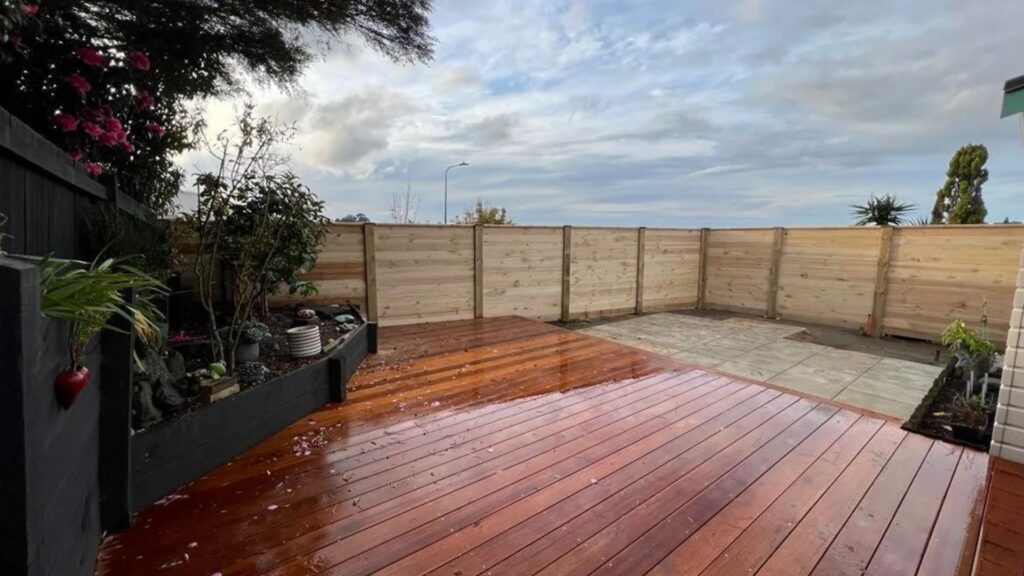
Is Kwila Decking Worth The Cost?
Durability That Pays Back
Kwila is a dense hardwood that handles New Zealand’s sun, rain, and foot traffic. It resists wear, holds fasteners well, and stays stable when you build and ventilate it correctly. With regular cleaning and periodic oiling, many decks run for decades with only minor board swaps. That longevity reduces replacement cycles and keeps your outdoor area solid for years.
Aesthetics That Lift Everyday Living
You get a rich, warm tone that elevates outdoor spaces from day one. You can oil to keep the colour or let it weather to a silver patina. Either way, the grain looks natural and premium. Guests notice. Photos pop. You’ll enjoy spending more time outside, which is the whole point of adding a deck.
Resale Appeal For Kiwi Homes
Buyers in NZ value usable outdoor space. A well-built Kwila deck helps your listing stand out and can support a stronger first impression at open homes. While no deck guarantees a set return, quality materials and tidy workmanship increase perceived value and can shorten time on market.
Long-Term Savings From Fewer Replacements
- Fewer board failures over time means less spend on materials and labour.
- Stable hardwood reduces warping and cupping when installed with proper spacing and airflow.
- Routine maintenance is predictable: clean, oil, replace the odd board.
- Compared with softwoods that need more frequent fixes, the total cost of ownership often narrows after several years.
- Versus composite, Kwila’s upkeep is higher, but your upfront spend is often lower. If you enjoy light maintenance and the look of real timber, the balance can favour Kwila.
Quick Cost-Of-Ownership Snapshot (Conceptual)
- Pine: Lower initial price, more replacements over 10–15 years.
- Kwila: Mid–higher initial price, periodic oiling, service life measured in decades.
- Composite: Higher initial price, low upkeep, long service life.
Practical Advice: Treat Kwila As An Investment
- Get three quotes from local builders; compare materials, fixings, and aftercare.
- Ask for legally and responsibly sourced Kwila (e.g., documented supply).
- Keep the design simple to control the cost of Kwila decking NZ projects.
- Prioritise airflow under the deck and correct board spacing to extend life.
- Set a maintenance calendar: clean quarterly, oil when the surface looks dry.
- Keep a few spare boards from the same batch for seamless future swaps.
When you weigh durability, natural beauty, and buyer appeal against fewer replacements over time, Kwila stacks up well. Treat it as an investment in your home and lifestyle, not just an expense.
Start your free consultation. Share your measurements and goals. We’ll map the next steps together with Deck Builders Christchurch.
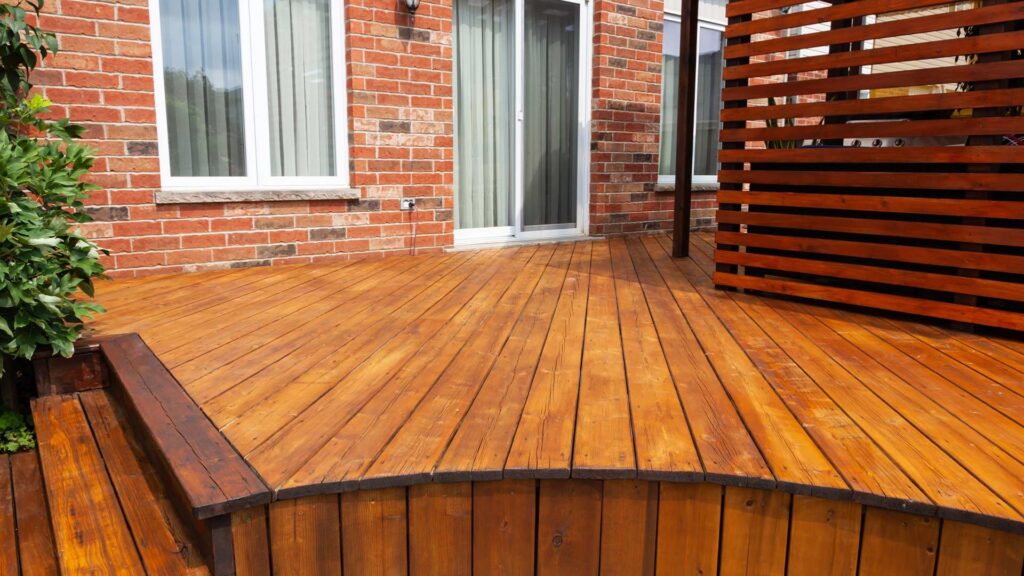
FAQs: About Cost Of Kwila Decking In NZ
How much does Kwila decking cost per m² in NZ?
Kwila decking in New Zealand generally costs between $90 and $150 per m² for the timber itself. If you hire a professional, installation can add $300 to $500 per m² depending on the deck design and region.
Is Kwila more expensive than pine decking?
Yes, Kwila is usually more expensive than pine. Pine decking may cost around $40 to $70 per m² for materials, while Kwila sits in the $90 to $150 range. The higher price reflects Kwila’s durability, appearance, and long lifespan.
Why is Kwila decking popular in New Zealand?
Kwila is a dense hardwood that resists wear, weather, and pests. It also has an attractive reddish-brown tone that enhances outdoor spaces. Many homeowners choose it for its balance of beauty and strength.
How long does Kwila decking last?
With proper care and maintenance, Kwila decking can last 25 years or more. Regular oiling and cleaning help preserve its appearance and prevent splitting or warping over time.
Does Kwila decking need regular maintenance?
Yes, Kwila decking requires maintenance to keep its rich color and structural integrity. Oiling the timber every 6 to 12 months and regular cleaning will help it resist fading and weather damage.
Is Kwila decking environmentally sustainable?
Sustainability depends on the source. Some Kwila is sourced from responsibly managed forests and carries FSC certification. Always check that your supplier provides timber from legal, sustainable sources.
What factors influence the cost of a Kwila deck?
Key factors include timber grade, deck size, design complexity, labour costs, site preparation, and any added features such as stairs, railings, or built-in lighting.
Can I build a Kwila deck myself to save money?
Yes, DIY installation is possible if you have carpentry skills. This can save thousands in labour costs, but it requires time, tools, and attention to detail. Many homeowners still prefer professionals for safety and quality assurance.
How does Kwila compare to composite decking?
Kwila costs less upfront than some premium composite options but requires more maintenance. Composite decking, while more expensive initially, is low-maintenance and designed to last decades without oiling or staining.
Is investing in Kwila decking worth it?
For many homeowners, yes. Kwila decking is strong, attractive, and long-lasting. While it costs more upfront, the investment pays off with durability, natural beauty, and increased property value.
Conclusion
Kwila costs more upfront but pays you back with decades of strength, a premium look, and low replacement needs, so weigh the total cost of ownership rather than the sticker price alone when comparing the cost of Kwila decking in NZ to pine or composite. Get at least three itemised quotes from local suppliers or licensed builders and ask for clear line items covering timber grade, board width and thickness, moisture content, fixings or hidden fasteners, subframe materials, labour per m², consents, site prep, stairs or handrails, waste removal, and finishing oils. Request recent photos of completed decks, references, and warranty terms so you can judge workmanship, not just price. Confirm maintenance expectations up front, oiling schedules, cleaning, and slip resistance, so you understand long-term care and budget. Choose responsibly sourced Kwila by asking for FSC or PEFC chain-of-custody certificates and legality documents, and keep records in case you sell your home.

